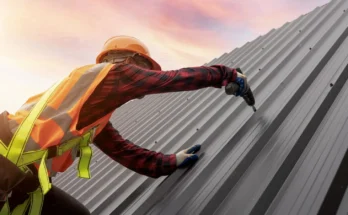No one likes trying to stream music or watch a video on their phone just to find that the Wi-Fi isn’t working. Having good Wi-Fi in your hotel, restaurant, or even your home is essential to making guests feel comfortable and keeping people coming back for more. If people are complaining about drops and dead zones and you don’t know what to do about it, you need to look into the things that cause Wi-Fi dead zones.
Causes of Wi-Fi Dead Zones
Unfortunately, since many things can cause Wi-Fi dead zones, it may be difficult to figure out the exact reason why you are experiencing drops. If your router isn’t strong enough or is situated on one side of the building, the signal may not reach everywhere. Commonly, old buildings and houses built with thick plaster and chicken wire are full of dead zones, and large metal objects such as shelving and desks can block signals too. Interference from other devices is a common reason for Wi-Fi dead zones. More things that cause Wi-Fi dead zones include:
- old cordless phones
- microwaves
- baby monitors
- wireless security systems
- wireless sound systems
- signals from neighboring routers
How To Find Wi-Fi Dead Zones
Finding the Wi-Fi dead zones in your building or home is simple. You probably already know where several are if you’re trying to figure out how to fix your internet. To find the dead zones, turn on the Wi-Fi on your device and start moving around the room. If you see the signal drop or go to zero, you’ve found a dead zone. Move slowly, though, because signals don’t update instantly. You can also try streaming or downloading something on your computer in each of your rooms to detect which area is receiving the weakest signal.
Pro Tip: Use an app for your phone, such as Wi-Fi Analyzer for Android, to check your Wi-Fi and get additional details about its speed. iPhone owners must use the tracker connected to their provider as Apple does not allow third-party apps.
How To Fix WI-FI Dead Zones
If your signal is being blocked by heavy metal furniture, you might be able to fix your dead zones by rearranging the shelves. Most businesses need their desks and microwaves to remain where they are, so another option is to reposition the router. Moving your router to a more central location may provide a better signal to more areas of your home or office. To boost the signal even more, you could add a more powerful antenna or Wi-Fi repeater that can extend coverage over a larger area. This solution can work for businesses, hospitals, and other campuses. If your company campus is extensive, a distributed antenna system (DAS) could be the answer. With a DAS, a company installs a system of cables or antennas that take your router’s signal anywhere you need it to go, including basements, stairwells, and parking garages.
Next time you discover a Wi-Fi dead zone, don’t worry. Use these tips for finding and fixing dead zones in your home or business and eliminate any risk of dropped calls or missed connections.
FAQ
How do I find WiFi dead zones?
Finding the Wi-Fi dead zones in your building or home is simple. You probably already know where several are if you’re trying to figure out how to fix your internet. To find the dead zones, turn on the Wi-Fi on your device and start moving around the room. If you see the signal drop or go to zero, you’ve found a dead zone. Move slowly, though, because signals don’t update instantly. You can also try streaming or downloading something on your computer in each of your rooms to detect which area is receiving the weakest signal.
Additional Resources:
Live Streaming
Telegram



